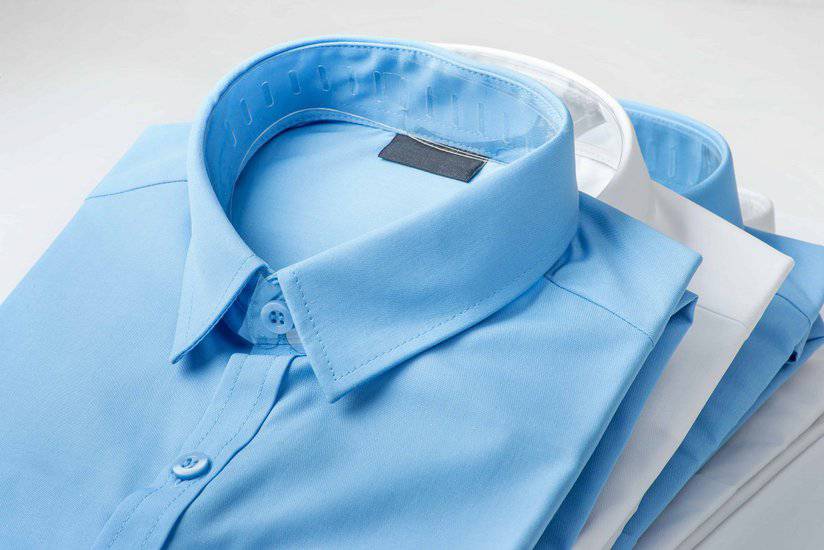A good variety of dress shirts is an essential complement to a business wardrobe. Dress it up with cufflinks, a tie, and a jacket, or keep things more casual by wearing it sans accessories.
Dress shirts are also perfect for date nights, parties, and even funerals. But precisely, how many dress shirts should a man own?
A decade ago, the answer might have been simple. But today, office environments are more casual, and many of us may be working from home long-term. Even modern technology is playing a role with the advent of eco-friendly fabrics that don’t require washing.
The following are some of the considerations to keep in mind when shopping.
What is a Dress Shirt?
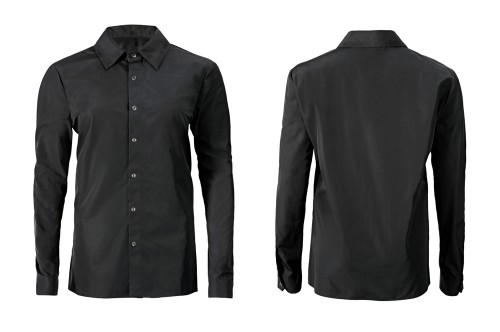
First, let’s distinguish between a dress shirt and a casual shirt, sometimes also known as sports shirts. Many guys think anything with a collar and long sleeves is a dress shirt – wrong!
Dress shirts come in various styles, but they can generally be distinguished from sports shirts by a few characteristics. Dress shirts will always be made from finely woven fabrics like high-thread-count silks and cotton.
Anything with a more rugged profile and less crisp finish, like linen, denim, cotton, and chambray, will be considered a sports shirt.
Muted colors and small-scale patterns are the hallmarks of dress shirts. You can take it as given; anything with a bold print, plaid, or stripe is a sports shirt, regardless of the fabric from which it’s made.
Dress shirts come with different fits but will always be longer than sports shirts to stay tucked into pants. Their collars and cuffs are stiffer, and they will never have more than one pocket.
Now that we’ve cleared up what a dress shirt is, there’s a good chance you have fewer than you thought. So time to get shopping!
The Perfect Number
The standard rule of thumb for any man working in a professional, corporate environment is 8 to 12 shirts. That’s assuming you wear a dress shirt every weekday.
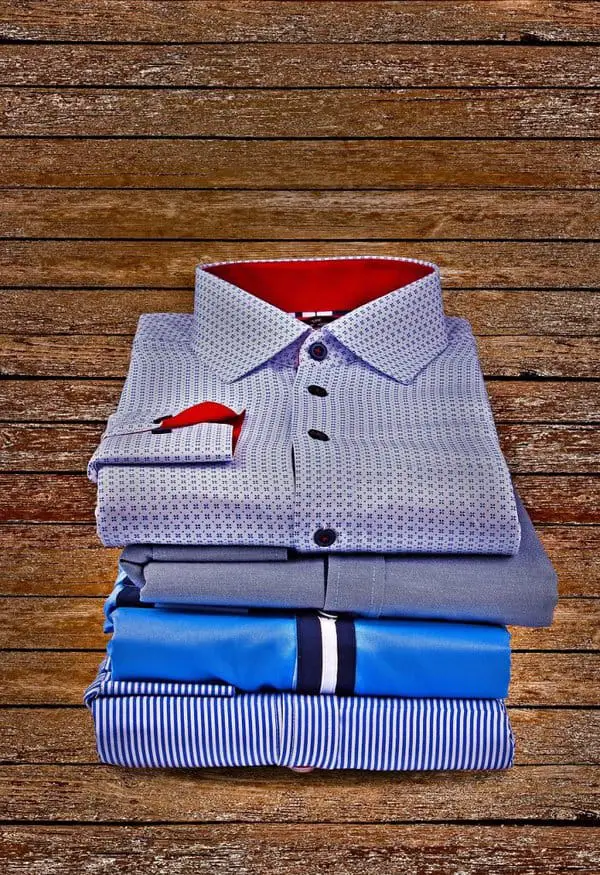
If you only wear dress shirts for special occasions, 3 is a good number to aim for. There’ll be times in your life where this might not be enough, though. We go through stages where everyone we know is getting married, for example. You don’t want to be the guy with the same three shirts in all the photos.
What Should Your First Three Dress Shirts Look Like?
The more dress shirts you own and rotate, the longer they will last, especially if you care for them appropriately. Real enthusiasts can have up to 100 dress shirts at any one time.
Bespoke shirts, if you can afford them, are an investment you’ll never regret. Ask your tailor to provide separate spare collars and cuffs. These are the first parts of a shirt to fray as they get the most friction. They can extend the lifeline of your dress shirts significantly. Failing that, you can always convert favorites to Winchester shirts, meaning you add white collars and cuffs. It’s a classic look and will give you a few extra year’s worth of wear.
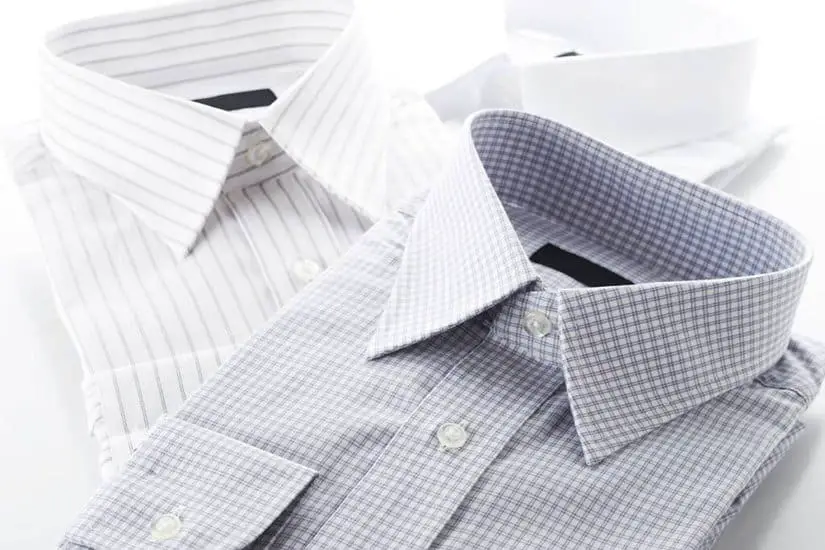
What Are The Different Types of Dress Shirts?
There are several types of dress shirts you should know about if you’re planning on getting an adequate collection of dress shirts:
1. Basic
Your basic dress shirt is one void of patterns, stripes, and anything that’s outside the box. You’re looking at a plain white dress shirt that’s universally applicable to various looks.
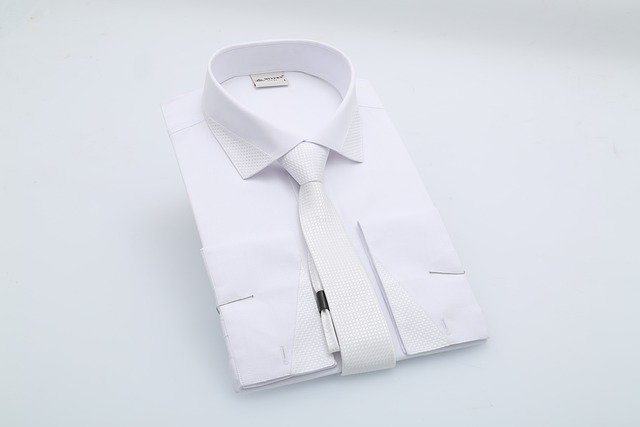
2. Striped
This shouldn’t come as a surprise, but everyone loves a striped dress shirt. It’s a classic, and worn right, it can elevate a look, making it look even more sophisticated. With a stripped shirt, you’ve got three options pinstriped, thick striped, and gingham check. A striped dress shirt serves all kinds of looks, from preppy to professional.
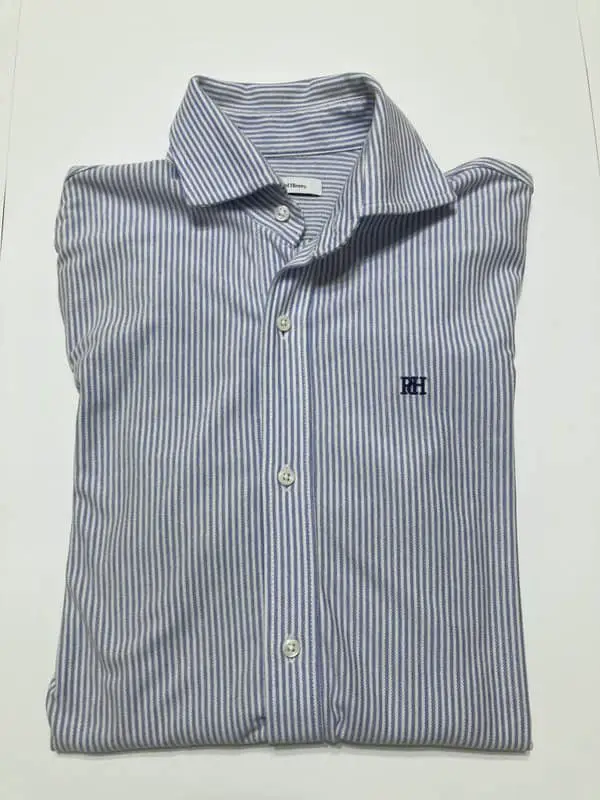
3. Gingham
When it comes to traditional, it doesn’t get more traditional than gingham. The designs are usually in a checkerboard fashion. With gingham, you’ve got several options:
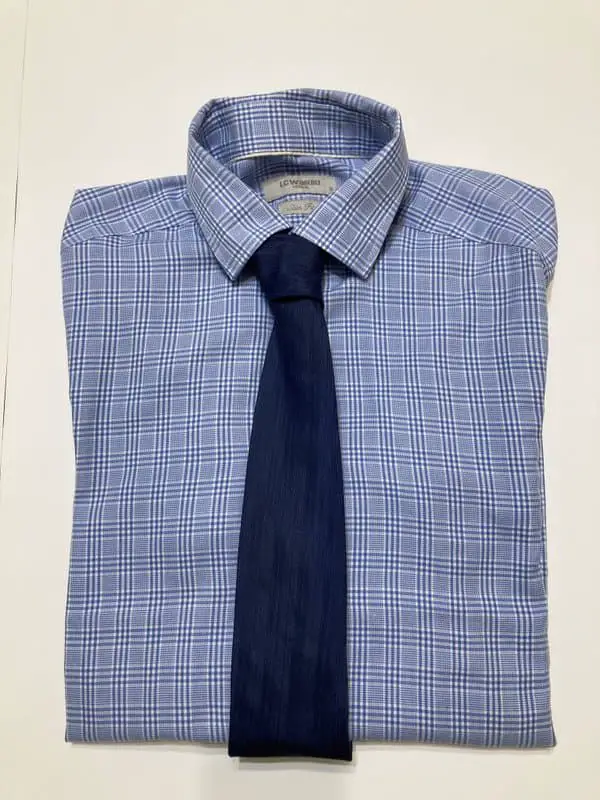
- Standard gingham, which is the classic grid style which, is symmetrical but very simplistic. It’s able to be paired with almost any outfit.
- Bold gingham is exactly what it sounds like. You’re looking at more daring patterns, brighter colors, and more experimentation.
- Patterned gingham is more subtle yet with a classy flare to it. There’s more opportunity to incorporate your personality into your outfit with a patterned gingham.
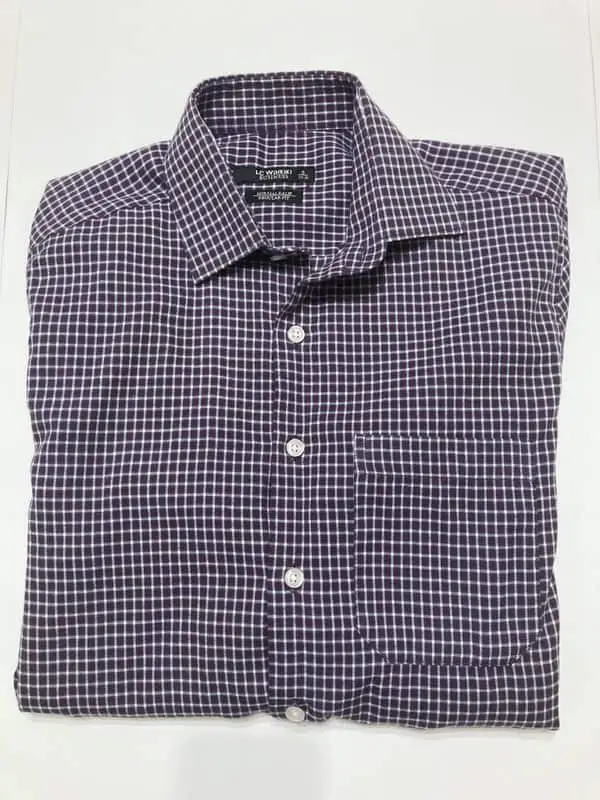
4. Checks & Balances
When it comes to checks and balances, it refers to the meshing of different types of checks but ensuring that they work well together to not distract and throw off your overall outfit. This is where the balances come into play. It’s a balancing act between the styles.
What Shirts Should You Begin your Collection With?
The obvious answer is at least one white shirt. A crisp white dress shirt is bound to impress, no matter what the occasion. It’s also easy to accessorize a plain white shirt. However, unless you already own cufflinks, it makes sense to limit your initial expenditure by choosing a shirt with a single barrel cuff, also known as a button cuff.
Consider your climate when deciding on the fabric of your first white shirt. Cold climates might require oxfords or heavier twill shirts, or even a slightly flannel texture. If you live in an area with extreme differences between seasons, you will need two sets of shirts. Otherwise, a good idea is to go for a medium weight fabric that can cover most days.
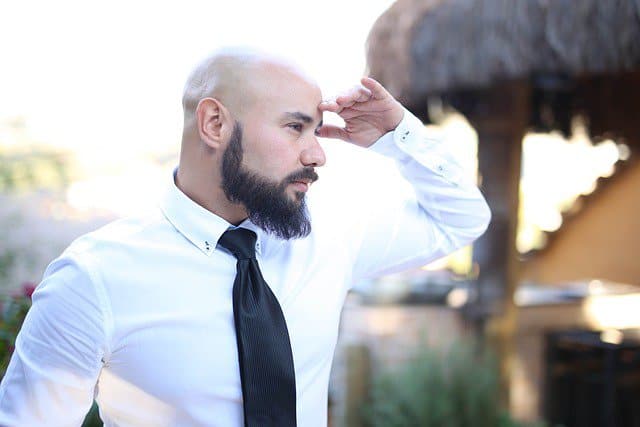
And our suggestion for your second dress shirt? Another white dress shirt! Yes, that’s right – you need at least two white dress shirts. But make your second white less bright. You can achieve this by choosing a slightly textured weave, such as a waffle or herringbone weave. The slight shadows caused by the weave texture will mute the whiteness of the thread. Choose a different placket, collar, or cuff to additionally distinguish it from your first shirt.
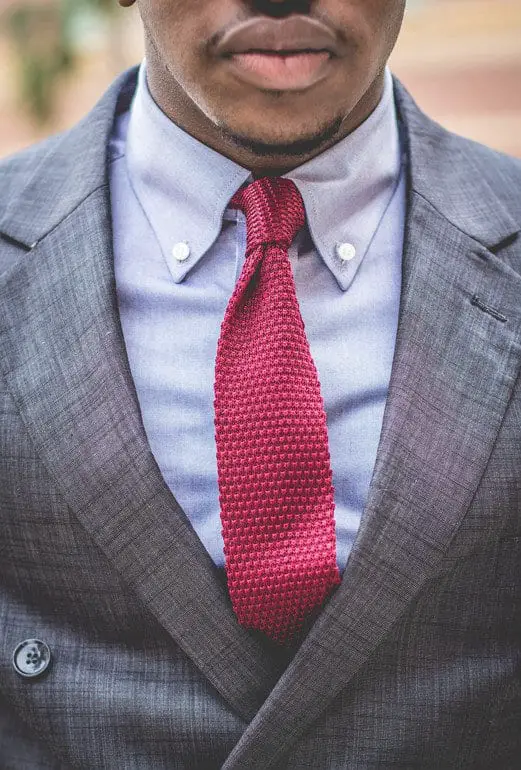
Your third dress shirt should be light blue in a plain weave. Blue is an extremely versatile color that can be worn with almost any color suit, including black, navy, brown, gray, or burgundy. Accessories can be in darker hues of blue and green or complimentary colors like a burnt orange (or shades of its components colors, yellow and red.) Many patterns such as plaids, paisleys, and checks will also include blue.
Other Essential Shirts for Your Collection
Other classics to add to your collection include a selection of different shades and weaves of light blue, a blue and white striped shirt, a pastel pink, and ivory. If you’re new to color, stick to pastels and other light shades.
Remember, your ties should always be darker than your shirt. Experiment with different styles, weights, and weaves.
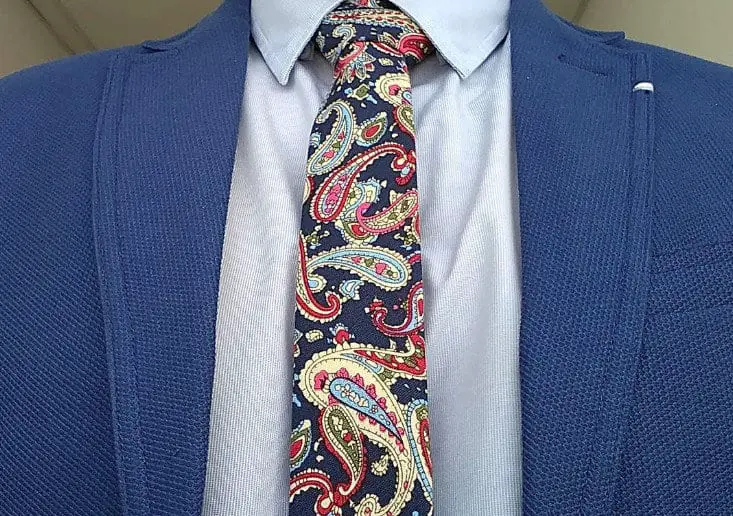
Caring for Your Dress Shirts
Always read the care instructions before washing your dress shirts. Most cotton shirts can be machine washed, but silks and wools will probably require dry cleaning.
We strongly recommend hang-drying your dress shirts. If you have to machine dry your shirts, use low heat. Use a good quality steam iron on your shirts, starting with the sleeves, moving next to the back. Then do the front inward from the pocket. Lastly, iron the collar from the center out.
Always hang your shirts immediately after ironing on good quality wooden hangers that will maintain their shape. Ensure there is sufficient room in your closet to avoid shirts being creased while hanging.
FAQs
Here are some of the most common questions we’ve found when it comes to how many dress shirts a person should own.
What helps you understand how many dress shirts you might need?
It’s a variety of factors to consider. You need to determine how often you wear dress shirts, for starters. You want to have enough dress shirts that if you wear one every day, you’ve got spares in case. Then there’s the intent behind the dress shirts. If they’re for work, you might have work-specific ones. If it’s for going out, then you’ll have ones that might not be as office appropriate. It’s things like this that you need to consider when shopping for dress shirts.
Is there such a thing as too many dress shirts?
Of course. However, you need to determine if that’s a good or bad thing. If you’re flushed with dress shirts, you’ve got a lot of options for what to wear, and that’s got its benefits. On the other hand, just because someone has a lot of options, doesn’t mean they always utilize all their options.
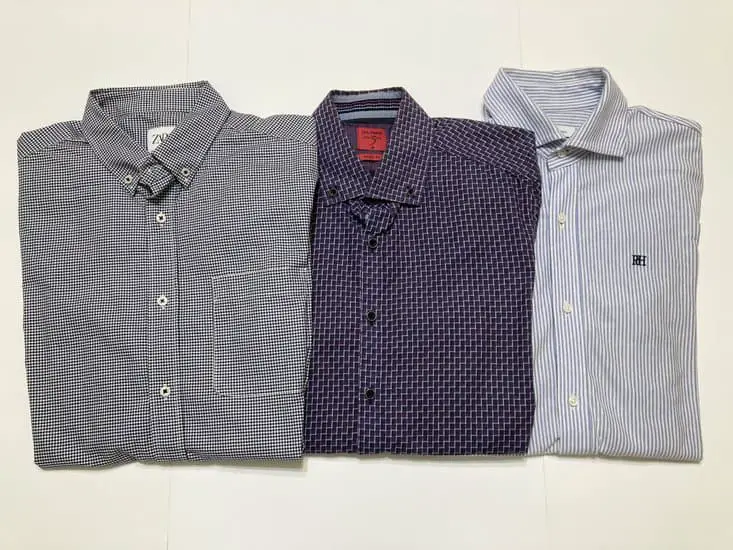
Final Thoughts on How Many Dress Shirts Should a Man Own
In this article, we’ve given you some simple “rules” to help you start your dress shirt collection. But above all, have fun. Clothing is a reflection of your personality, so once you’ve got your confidence up, play a bit.

Samoel Ovanessian is the founder and creator of StylishAlpha.com – a website dedicated to men’s fashion. As a proud owner of more than 200 ties, he loves digging through new clothing combinations for everyday use, formal events and even just for fun. You can read more about Samoel here.

